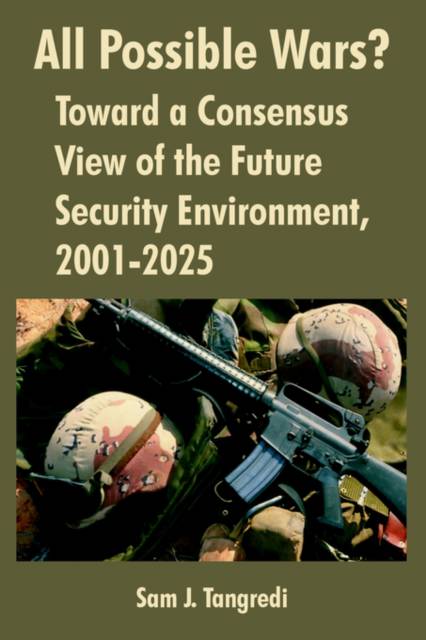
- Afhalen na 1 uur in een winkel met voorraad
- Gratis thuislevering in België vanaf € 30
- Ruim aanbod met 7 miljoen producten
- Afhalen na 1 uur in een winkel met voorraad
- Gratis thuislevering in België vanaf € 30
- Ruim aanbod met 7 miljoen producten
Zoeken
All Possible Wars?
Toward a Consensus View of the Future Security Environment, 2001-2025
Sam J Tangredi
Paperback | Engels
€ 21,95
+ 43 punten
Omschrijving
This survey is a product of the Quadrennial Defense Review (QDR) 2001 Working Group, a project of the Institute for National Strategic Studies at the National Defense University. Sponsored by the Chairman of the Joint Chiefs of Staff, the working group is an independent, honest-broker effort intended to build intellectual capital for the upcoming QDR. More specifically, it aims to frame issues, develop options, and provide insights for the Chairman, the services, and the next administration in three areas: defense strategy, criteria for sizing conventional forces, and force structure for 2005--2010. One of the group's initial tasks was to assess the future security environment to the year 2025. This was pursued by surveying the available literature to identify areas of consensus and debate. The goal was to conduct an assessment that would be far more comprehensive than any single research project or group effort could possibly produce. This survey documents major areas of agreement and disagreement across a range of studies completed since the last QDR in 1997. Because it distills a variety of sources and organizes and compares divergent views, this volume makes a unique contribution to the literature. It also provides a particularly strong set of insights and assumptions on which both strategists and force planners can draw in the next Quadrennial Defense Review. Michele A. Flournoy Project Director
Specificaties
Betrokkenen
- Auteur(s):
- Uitgeverij:
Inhoud
- Aantal bladzijden:
- 232
- Taal:
- Engels
Eigenschappen
- Productcode (EAN):
- 9781410218193
- Verschijningsdatum:
- 4/11/2004
- Uitvoering:
- Paperback
- Formaat:
- Trade paperback (VS)
- Afmetingen:
- 152 mm x 229 mm
- Gewicht:
- 344 g

Alleen bij Standaard Boekhandel
+ 43 punten op je klantenkaart van Standaard Boekhandel
Beoordelingen
We publiceren alleen reviews die voldoen aan de voorwaarden voor reviews. Bekijk onze voorwaarden voor reviews.











